#above mammoth caves
Text

sand cave
#naturecore#witchcore#cottagecore#nature#forestcore#forest#nature hikes#springtime#nature photography#flowercore#sand caves#sand cave#cave city#Kentucky#above mammoth caves#mammoth cave#mammoth caves#mammoth cave system#mammoth cave trail#400 mile cave system#cave system#caves#cave#nature aesthetic#bear habitat#habitat#ecosystem#rocks#stones
26 notes
·
View notes
Text

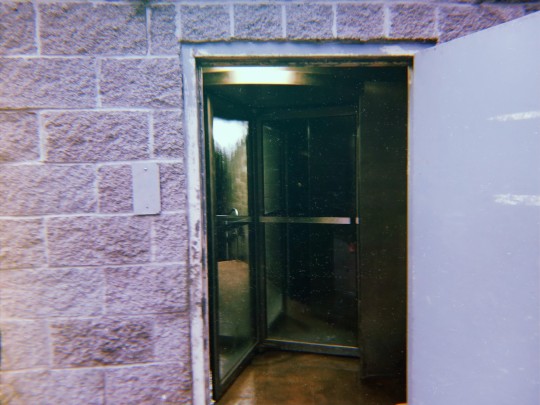
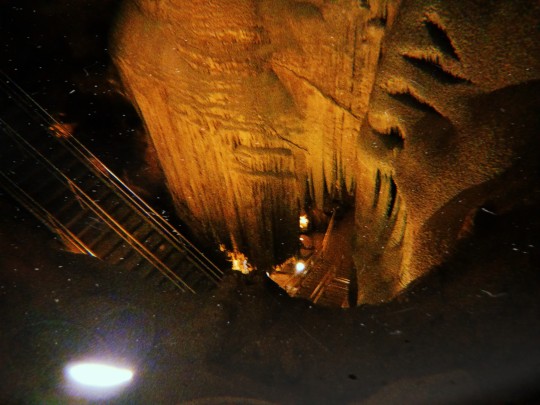
revolving doors into cave system
#shoutout to the super kind rangers that let me stay to take the pics of the door after everyone exited#there should be a term for fear of these things#submechanophobia#but for things above water#but not mechanophobia either#because its not super big#anyways tags.#cave#caves#my pics#cavecore#mammoth cave national park#aesthetic#nostalgia#liminal#liminal spaces#nature#naturecore#photography#weirdcore#dreamcore#surreal#this felt unreal
65 notes
·
View notes
Text
The Regions of Kishetal
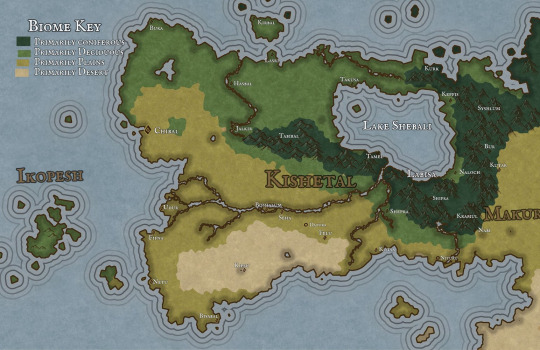
Pictured Above: An environmental map of the land of Kishetal

Pictured Above: A map of the 7 Kishic Regions
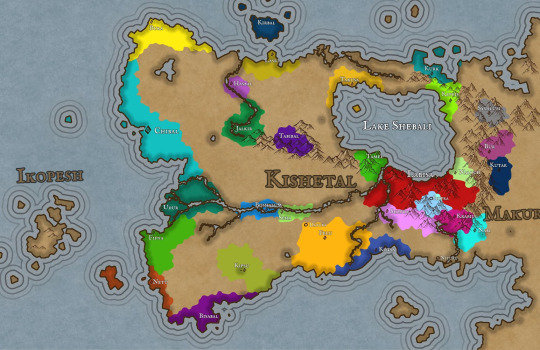
Pictured Above: A map of the Kishic City-States and their territories
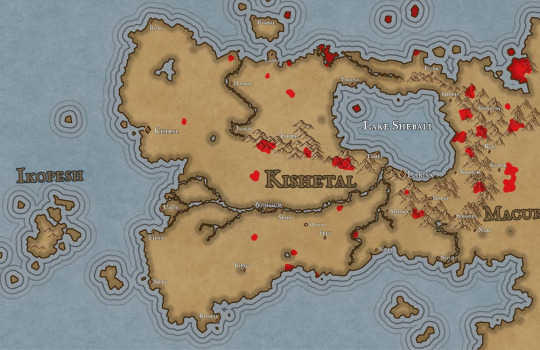
Pictured Above: A map of Significant Stable Forestfolk Populations
Here is a quick overview of the regions of Kishetal, the homeland of Narul and Ninma. And some good ol' maps. I'll be posting in the future about some of the creatures and forestfolk mentioned below!
As always send questions please!
Continues below the cut!
The Regions of Kishetal
1. The Red Cedar Mountains
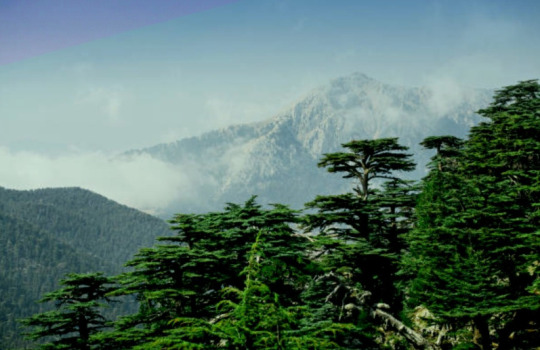
Pictured Above: The Red Cedar Mountains near Kepfis
The Red Cedar Mountains stretch from the Shabalic Sea in the north nearly to the Sea of Agitu in the south. The Red Cedar Mountains were formed in ancient times having already been present in the Age of Metal and Glass. However, the Red Cedar Mountains are not among the eleven “Chains of Sanctuary,” those mountain ranges around the planet in which humanity sheltered from the wrath of the gods during the Calamity. The predominant underlying stone of the RCM is limestone, with occasional but significant areas and deposits of serpentinite, basalt, and dolerite. The region experiences warm summers and cold winters, often with considerable snow and rainfall, particularly at higher elevations. The Mountains surround Lake Shebali, which acts as an inland sea and a source of food and transport for much of eastern Kishetal. At lower elevations, such as Labisa, the predominant vegetation is juniper and oak. Forests of black pine, cedar, and fir are dominant and common at higher elevations. The highest peaks are home to alpine meadows. Wild grapes, figs, and olives are all abundant in this region alongside their domesticated cousins.
Some fauna include wolves, jackals, wild goats, giant minks, wild bulls(aurochs), leopards, kishic lions, kishic tigers, caracals, roe deer, gazelle, wild boar, eagles, storks, horned rabbits, kishic brown bears, lynxes, and kishic ibex.
Very rarely found is the Kishic Elephant, actually a species of mammoth, these tiny pachyderms are about the same size as the average dairy cow. Only about 100 still survive in sheltered valleys to the north.
Examples of monstrous and magical Fauna including Flesh-eating deer, kiriki, dorasi, and the kutiri. While there are rumors of larger monsters such as dragons, these are mostly little more than legends and folklore. Though there is no telling what creatures could be hiding in the many caves and tunnels which dot the mountains.
There are numerous small forestfolk tribes which live in isolated areas.
(I will post more about that later)
2. The Felic Plain

Pictured Above: The Felic Plain north of Boshalum
The Felic Plains primarily consist of grassland with occasional patches of deciduous forest. The area is famed for its almond trees and its many wildflowers, including wild roses and hasir flowers. During the fall, great patches of the plains turn red with the blooming of hasir flowers.
The region experiences hot summers and mild but wet winters, which makes the region ideal for farming. As such, the Felic Plains act as the bread-basket of Kishetal. The region is split by the Aratshin River, which extends from Lake Shebali to the Green Sea. The plains are disrupted by an especially dense forested area known as the Garden. All attempts to settle the Garden have failed.
Fauna include, wolves, jackals, gazelles, wild bulls, kishic lions, deer, eagles, storks, horned rabbits, kishic brown bears, foxes, wild goats, polecats( which are popular pets), felic falcons, and hyenas.
The plains are home to several monstrous/magical species, including Flesh-eating deer, garudu, takmek, and the Unturu Serpent.
There are a handul of forestfolk tribes as well as a single hillfolk tribe in this region.
3. The Western Coast
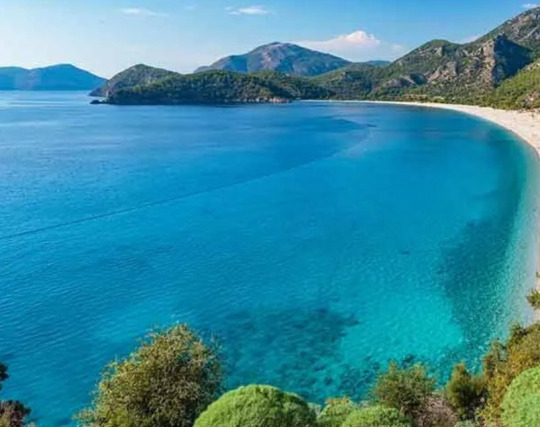
Pictured Above: The Western Coast near the city-state of Chibal
The Western Coast borders the Green Sea stretching from Bura in the north to Bisabal in the south. The ecoregion has a warm semi-tropical climate akin to a Mediterranean climate. Winter is the wettest season, and summer is the driest.
The Western coast consists primarily of three biomes. The deciduous forests in the north consist primarily of hornbeams, oaks, maples, cedar, and black pine. The central marshlands surrounding Udur have heavy concentrations of reeds, papyrus, poplar, and willow. The southern plains are similar to the Felic plain region though typically arider. Bay, olive, carob, and sweetgum are all common in this region. The Green Sea and its coast are home to many kinds of edible seaweed which form an essential part of the Chibalic and Buric diets.
Fauna include wild boars, foxes, jackals, wolves, badgers, wildcats, coastal brown bears, gazelles, deer, wild bulls, wild goats, and storks. Marine life includes dolphins, seals, whales, sea turtles, and many species of fish.
Monstrous fauna include bulari, sea-dragons, serpents, krinari, and ramitalek.
Aside from Ikopeshi's there are no surviving forestfolk tribes in this region.
4. The Northern Coast/Sheprian Forest

Pictured Above: The Sheprian Forest near Shepra
The Sheprian forest in the northern part of Kishetal is primarily composed of deciduous trees with occasional conifer patches at areas with higher elevations. Common trees include oak, chestnut, birch, hornbeam, black pine, cedar, and beech.
The climate is temperate with warm dry summers and cold wet winters. The north is typically thought of as the wildest region, with most city-states and settlements, including Shepra, clinging to the Corin river. Sheprian poetry is a unique variety of poetry, similar to the Japanese haiku, which originates from the forest festivals of the northern coast.
Fauna include wolves, jackals, gazelles, wild bulls, kishic lions, deer, eagles, storks, horned rabbits, kishic brown bears, foxes, wild goats, giant minks, horned rabbits, wild sheep, eagles, and kishic leopards.
Monstrous fauna include flesh-eating deer, garudu, kiriki, dorasi, and winged tigers.
This region contains the second highest concentration of forestfolk after the Red Cedar Mountains.
5. The Southern coast
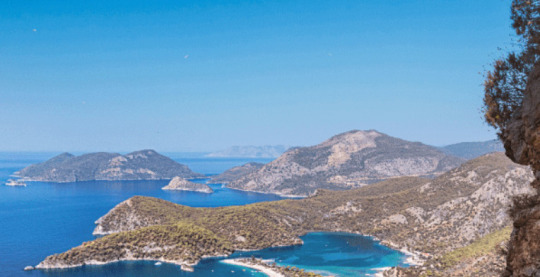
Placed Above: The Southern Coast near Bisabal
The Southern Coast consists of three regions; the southern deciduous forest, the scrubland, and the plains. The climate in the south is quite warm, with summers being hot and dry and winters mild in both temperature and rainfall. On rare occasions, the southern coast may experience heavy snowfall.
Major cities are sparse however, many villages dot the southern coast, many of these villages rely on piracy, preying primarily on Apunian and Jezaani ships traveling to and from the Western Coast.
Limestone plateaus and outcroppings are near the border of the southern coast, and the desert are said to be the remains of ancient buildings though this is not true.
Poplar, olive, bay, carob, almond, oaks, and umbrella pine are all common.
Fauna includes wolves, jackals, gazelles, wild bulls, kishic lions, deer, eagles, storks, horned rabbits, kishic brown bears, foxes, wild goats, polecats, felic falcons, kishic leopards, and hyenas.
The south is home to relatively few monstrous/magical species though it is home to the largest population of kiriki in Kishetal.
There are only two forestfolk populations in this region.
6. The Kipsian Desert
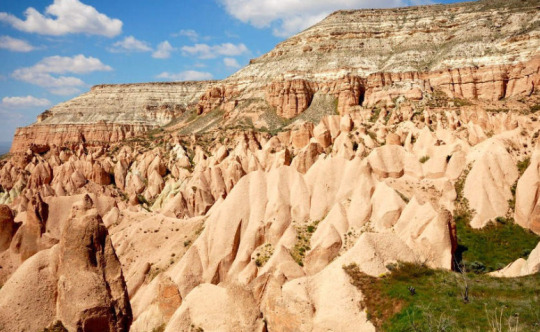
Pictured Above: The limestone formations of the Kipsian desert south east of Kipsu.
The Kipsian desert is the least populated region of Kishetal as the arid environment is not conducive to agriculture. Ruins of older civilizations suggest that the area may have once been more hospitable.
Plant life is sparse and largely limited to hardy shrubs and grasses. The region is famous for its carob and the candies and sweets produced from the carob by its inhabitants. Mesa, plateaus, pillars, and other stone structures are common; foreign visitors often visit the region seeking religious or spiritual enlightenment amongst the arches and columns. Many never leave.
Fauna include jackals, gazelles, kishic lions, deer, gazelle, wild asses, and hyenas. The Kipsian desert is also the only region in Kishetal in which the kishic ostrich and oryx survive.
Monstrous fauna include Flesh-eating deer, takmek, sikara, kiriki, and giant lions.
There are no forestfolk populations here.
7. The Makurian Steppe
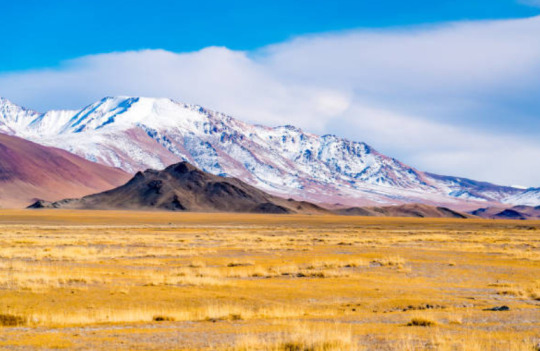
Pictured Above: The Makurian Steppe north of Shebal
The Makurian steppe is massive, spreading over most of western Masia. Only a tiny sliver of that vast extent falls in Kishetal. Trees are almost entirely absent. Vast expanses of grass-covered hills define the area. To the north of the steppe is the Shabalic forest, and to the south is the Jezaaic desert.
The heavy presence of sagebrush, sedges, and grasses and the relatively dry climate have led to a preference for a nomadic and pastoralist lifestyle. Makurian tribes regularly raid and intrude in the region, with their westward pushes typically being halted by the mountains.
Fauna include wild horses, wild asses, wild bulls, jackals, gazelle, deer, mountain sheep, macuri lions, and leopards.
Monstrous fauna include the tomob and the wulut.
There are only 3 native forestfolk populations in this region.
As always ask questions! Anything! And if y'all like this I might do this with some other regions.
@patternwelded-quill @flaneurarbiter @skyderman @blackblooms @roach-pizza @illarian-rambling @dezerex @theocticscribe @axl-ul, @persnickety-peahen @angie-j-kay
@surroundedbypearls I was looking through my intro post and I just realized I've been completely forgetting to put you in the taglist! Sorry about that!
#writeblr#writing#fantasy#worldbuilding#writer#fantasy writing#queer fantasy#fantasy world#testamentsofthegreensea#fantasy map#fantasy novel#fantasy worldbuilding#world building#narul#writblr
53 notes
·
View notes
Text
Evolution
Langdon Smith (1858-1908)
When you were a tadpole and I was a fish
In the Paleozoic time,
And side by side on the ebbing tide
We sprawled through the ooze and slime,
Or skittered with many a caudal flip
Through the depths of the Cambrian fen,
My heart was rife with the joy of life,
For I loved you even then.
Mindless we lived and mindless we loved
And mindless at last we died;
And deep in the rift of the Caradoc drift
We slumbered side by side.
The world turned on in the lathe of time,
The hot lands heaved amain,
Till we caught our breath from the womb of death
And crept into life again.
We were amphibians, scaled and tailed,
And drab as a dead man's hand;
We coiled at ease 'neath the dripping trees
Or trailed through the mud and sand.
Croaking and blind, with our three-clawed feet
Writing a language dumb,
With never a spark in the empty dark
To hint at a life to come.
Yet happy we lived and happy we loved,
And happy we died once more;
Our forms were rolled in the clinging mold
Of a Neocomian shore.
The eons came and the eons fled
And the sleep that wrapped us fast
Was riven away in a newer day
And the night of death was passed.
Then light and swift through the jungle trees
We swung in our airy flights,
Or breathed in the balms of the fronded palms
In the hush of the moonless nights;
And oh! what beautiful years were there
When our hearts clung each to each;
When life was filled and our senses thrilled
In the first faint dawn of speech.
Thus life by life and love by love
We passed through the cycles strange,
And breath by breath and death by death
We followed the chain of change.
Till there came a time in the law of life
When over the nursing sod
The shadows broke and the soul awoke
In a strange, dim dream of God.
I was thewed like an Auroch bull
And tusked like the great cave bear;
And you, my sweet, from head to feet
Were gowned in your glorious hair.
Deep in the gloom of a fireless cave,
When the night fell o'er the plain
And the moon hung red o'er the river bed
We mumbled the bones of the slain.
I flaked a flint to a cutting edge
And shaped it with brutish craft;
I broke a shank from the woodland lank
And fitted it, head and haft;
Than I hid me close to the reedy tarn,
Where the mammoth came to drink;
Through the brawn and bone I drove the stone
And slew him upon the brink.
Loud I howled through the moonlit wastes,
Loud answered our kith and kin;
From west to east to the crimson feast
The clan came tramping in.
O'er joint and gristle and padded hoof
We fought and clawed and tore,
And cheek by jowl with many a growl
We talked the marvel o'er.
I carved that fight on a reindeer bone
With rude and hairy hand;
I pictured his fall on the cavern wall
That men might understand.
For we lived by blood and the right of might
Ere human laws were drawn,
And the age of sin did not begin
Til our brutal tusks were gone.
And that was a million years ago
In a time that no man knows;
Yet here tonight in the mellow light
We sit at Delmonico's.
Your eyes are deep as the Devon springs,
Your hair is dark as jet,
Your years are few, your life is new,
Your soul untried, and yet --
Our trail is on the Kimmeridge clay
And the scarp of the Purbeck flags;
We have left our bones in the Bagshot stones
And deep in the Coralline crags;
Our love is old, our lives are old,
And death shall come amain;
Should it come today, what man may say
We shall not live again?
God wrought our souls from the Tremadoc beds
And furnish’d them wings to fly;
He sowed our spawn in the world's dim dawn,
And I know that it shall not die,
Though cities have sprung above the graves
Where the crook-bone men made war
And the ox-wain creaks o'er the buried caves
Where the mummied mammoths are.
Then as we linger at luncheon here
O'er many a dainty dish,
Let us drink anew to the time when you
Were a tadpole and I was a fish.
20 notes
·
View notes
Text
Im being careful, I know what I’m doing…
Cw: 18+ !!
You feel groggy when you first wake up in the morning. Your arm moves lazily to feel the big hairy mammoth that would usually be lying with you, but your senses wake you up in realization and you sit up straight, your eyes move with your head, and you wake up to an empty bed "fuuhhcckk" you groan to yourself, you put on a shirt and walk out the room. The building you stayed in was vast, big enough to fit the number of people in Washington into one building, but you didn't need to look around the whole structure to find Miguel, you knew the one location he would be in, and you would frequently joke as the 'doom cave'.
The bright screens above you caused a slight blindness, and suddenly, a web shot from your arm, launching you onto the floor. Layla, who always brightened up your life, figuratively and literally, glitched on your shoulder. She kept you updated on the job Miguel couldn't do for seven months. "How long has he been up?" you asked her.
“Mmm” the bright yellow fairy tapped on her cheek before snapping her finger “For at least 5 hours, he sneaked out of the room for this”
You nodded slightly and Layla zips out of your view, now wanting to give you two the stage.
Miguel is in a shrimp stance that we can work with, holding a massive red flag and eyes the size of a bloodhound. He acknowledges your presence but chooses to ignore it as his fingers tap dance on the bright dance floors that fade after a minute; he was wearing a baby strap to support his hefty belly bump and couldn't perform work with just one hand. You knew your fetishes were strange, but you never imagined you'd be attracted by your husband in his robe, boxers with his soft package jutting out, pecs growing larger and strangely loaded with milk.
Stress was going to be the death of both him and the baby. He knew better, but the timeline needed to be followed and everyone required a check-up; you saw no reason for him to watch folks he didn't (or barely) know. Your hands glide up to his shoulders and squeeze him; his arms relax but his fingers remain frozen in the holograms; you see the chair you gave him at the beginning of Miguel's pregnancy from your peripheral view and shoot a rope to drag it closer; then you pat his back and whisper to his ear, "You should sit down."
Miguel's gaze never left the screen "Maybe" He kicked the chair out of the way, but you grabbed it swiftly. "Now, Miguel," you said.
"Later…" he said, his tone slightly angry.
You both weren't going to back down; you fired a web at his back and kicked the chair to him before pulling, just in time for him to sit down; he swore under his breath.
"Will you join me in bed and not sneak away again?" You ask, your hands back to firmly squeeze his shoulders, then you proceed to touch and milk his pecs, wetting the robe, "I have work to do" He repeats it, allowing it to stick with you because it is his only reason. Your mind wonders how a man can be so stubborn and independent yet, so loving and so un-independent. "You always have something to do," you remind him. "Take the day or even the week off." He slicks his hair back, brushing the strands away from his face.
Miguel hummed in response, returning to his grim work environment.
If you can't talk out of it with him, you might as well force him.
You keep squeezing his milky pecs; he usually keeps it quiet, but not when his hands slow down and tremble as he tries to do his job, keeping it hard while the warm liquid pours down your hands. Miguel's stern visage quickly softened, and you kept testing the waters, your lips haunting his neck with taunting teases.
Your hands move in a circular manner, and more golden milk flows like a fountain as you continue to squeeze his pecs. Miguel leans and squirms in his seat, while his cock expands and throbs uncomfortably in his underwear. He murmured under his breath, "Shockin' hell my love…" as the pre leaked through the fabric that grew thinner to hold his cock down. Miguel pulled down his boxers and his cock flung free, weeping precum and twitching under the belly.
Gasping for air, he called out her name “Lyla…” His body was drenched in sweat, and his heart was pounding out of his chest, as he collapsed into the chair. With every passing moment, his body temperature kept rising, and he could feel the adrenaline coursing through his veins, making him feel hornier than ever before “…Silent mode for 45 minutes”
The room dims to a greater light; you continue to grope his chest and lean in, but he leans forward. His hands grip the desk as you place your hands on his chest, then move them to hold his waist. The head of your cock nudges against Miguel's entrance, teasing him as you pull down your sweatpants and thrust the tip into his entrance, resulting in gentle and low grunts. "Keep holding my waist honey…" he told you, as you kept thrusting slightly "don't stop… shock… shock…" he whispered as you shoved the entire length in "shock!!, Órale güey!!" He moans aloud.
#miguel o'hara#miguel atsv#miguel x reader#miguel spiderman#miguel smut#miguel spiderverse#miguel 2099#miguel x you#atsv miguel#miguel x y/n#miguelmawad#breast milk#mpreg#pregnancy kink#preggo kink#boobymilk#mommy milkers
10 notes
·
View notes
Text



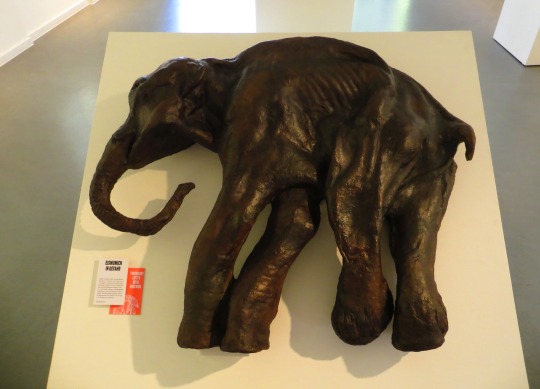


Woolly mammoth (Mammuthus primigenius)
(temporal range: 0.40-0.0037 mio. years ago)
[text from the Wikipedia article, see also link above]
The woolly mammoth (Mammuthus primigenius) is an extinct species of mammoth that lived during the Pleistocene until its extinction in the Holocene epoch. It was one of the last in a line of mammoth species, beginning with the African Mammuthus subplanifrons in the early Pliocene. The woolly mammoth began to diverge from the steppe mammoth about 800,000 years ago in East Asia. Its closest extant relative is the Asian elephant. The Columbian mammoth (Mammuthus columbi) lived alongside the woolly mammoth in North America, and DNA studies show that the two hybridised with each other.
The appearance and behaviour of this species are among the best studied of any prehistoric animal because of the discovery of frozen carcasses in Siberia and North America, as well as skeletons, teeth, stomach contents, dung, and depiction from life in prehistoric cave paintings. Mammoth remains had long been known in Asia before they became known to Europeans in the 17th century. The origin of these remains was long a matter of debate, and often explained as being remains of legendary creatures. The mammoth was identified as an extinct species of elephant by Georges Cuvier in 1796.
The woolly mammoth was roughly the same size as modern African elephants. Males reached shoulder heights between 2.67 and 3.49 m (8.8 and 11.5 ft) and weighed up to 8.2 metric tons (9.0 short tons). Females reached 2.6–2.9 m (8.5–9.5 ft) in shoulder heights and weighed up to 4 metric tons (4.4 short tons). A newborn calf weighed about 90 kg (200 lb). The woolly mammoth was well adapted to the cold environment during the last ice age. It was covered in fur, with an outer covering of long guard hairs and a shorter undercoat. The colour of the coat varied from dark to light. The ears and tail were short to minimise frostbite and heat loss. It had long, curved tusks and four molars, which were replaced six times during the lifetime of an individual. Its behaviour was similar to that of modern elephants, and it used its tusks and trunk for manipulating objects, fighting, and foraging. The diet of the woolly mammoth was mainly grasses and sedges. Individuals could probably reach the age of 60. Its habitat was the mammoth steppe, which stretched across northern Eurasia and North America.
The woolly mammoth coexisted with early humans, who used its bones and tusks for making art, tools, and dwellings, and hunted the species for food. The population of woolly mammoths declined at the end of the Pleistocene, disappearing throughout most of its mainland range, although isolated populations survived on St. Paul Island until 5,600 years ago, on Wrangel Island until 4,000 years ago, and possibly (based on ancient eDNA) in the Yukon up to 5,700 years ago and on the Taymyr Peninsula up to 3,900 years ago. After its extinction, humans continued using its ivory as a raw material, a tradition that continues today. With a genome project for the mammoth completed in 2015, it has been proposed the species could be revived through various means, but none of the methods proposed are yet feasible.
16 notes
·
View notes
Text
If I could create my own D&D Monster Manual
It would look something like this:
The names with the little dot before them are sub-species/variations of the name above, like Kenku, Nagpa, Tlacatecolo and Vrock are variants of the Aarakocra.
Aarakocra
Kenku
Nagpa
Tlacatecolo
Vrock
Abeil
Aboleth
Ahuizotl
Air Elemental
Invisible Stalker
Mihstu
Ragewind
Almiraj
Amphisbaena
ANIMATED OBJECT
Animated Broom
Carrionette
Flying Sword
Guardian Portrait
Living Tome
Rug of Smothering
Scarecrow
Ankheg
Craud (Sea Ankheg)
Arrowhawk
Blood Hawk
Ascomoid
Assassin Vine
Choke Creeper
Astral Defiler
Astral Dreadnought
Astral Filcher (Temporal Filcher)
Astral Marauder
Astral Slayer
Astral Stalker
Aurumvorax
Axe Beak
Achaierai
Azer
Babau (Blood Demon)
Balor (Pit Demon)
Banderhobb
Barbazu (Bearded Demon)
Basilisk
Id Fiend
Pyrolisk
Rock Reptile
Behir
Beholder
Eye Tyrant
Gauth (Spectator)
Mindwitness
Black Dragon (Deepwyrm)
Black Pudding
Reekmurk
Void Ooze
White Pudding (Snowflake Ooze)
Bladeling
Blink Dog
Cooshee
Moon Dog
Yeth Hound
Blood Amniote (Bloodrot)
Bloodthorn (Vampire Rose)
Blue Dragon (Stormwyrm)
Boobrie
Bugbear (Boogeyman)
Bagman
Bulette
Bullywug
Grung
Hezrou (Pod Demon)
Slaad
Carbuncle
Carrion Crawler
Rot Grubs
Ulgurstasta
Catoblepas
Cave Fisher
Avalancher
Centaur
Armanite
Chasme
Chathrang
Chimera
Choker
Skulk
Chuul
Uchuulon
Clay Golem (Terra-Cotta)
Cloaker
CLOCKWORK
Clockroach (Clockwork Horror)
Iron Cobra
Cloud Giant
Fog Giant
Storm Giant
Cloud Ray
Cockatrice
Copper Dragon
Coral Golem
Corollax
Couatl
Cranium Rats
Crawling Claw
Soul Shaker
Crystal Dragon
Cyclops
DARK TREE
Black Willow
Orcwort
Quickwood
Darkling (Dark Creeper)
Deadly Dancer (Impaler)
Death Knight
Dullahan
Deepspawn
Destrachan
Deva (Angel)
Angel of Decay (Rot Harbinger)
Erinyes (Fallen Deva)
Justicator (Order Deva)
Planetar (Battle Deva)
Solar (Light Deva)
Digester
Dire Angler
Light Devourer
Dire Ape
Barlgura
Girallon
Dire Bat (Mobat)
Fire Bat (Inferno Bat)
Sinister (Shadow Bat)
Dire Bear (Cave Bear)
Dire Beaver (Afanc)
Dire Boar (Tusk Terror)
Fhorge
Dire Catfish (Namazu)
Dire Chameleon (Ambush Drake)
Dire Constrictor (Titanoboa)
Boalisk
Dire Crocodile (Deinosuchus)
Hatori (Sand Crocodile)
Hullathoin
Dire Eel (Abaia)
Cave Moray
Dharculus
Dragon Eel
Lightning Eel
Dire Elephant (Mammoth)
Dire Elk (Megaloceros)
Dire Gar
Dire Hippo (Behemoth)
Dire Lion
Sea Lion
Dire Otter (Dobhar-Chu)
Dire Pufferfish (Kalothagh)
Dire Ram
Dire Rat
Osquip
Rylkar
Dire Rhino (Karkadann)
Gulgar (Diamond Charger)
Dire Seahorse (Hippocampus)
Dire Shark (Megalodon)
Dire Skunk (Aniwye)
Dire Sloth (Megatherium)
Dire Tiger (Smilodon)
Kirre
Dire Whale (Leviathan)
Dire Wolf (Worg)
Winter Wolf
Dire Wolverine (Gulon)
Disenchanter
Displacer Beast
Phane
Doppelganger
Fetch
Maurezhi
Dragon Turtle
Zaratan
Drow
Drider
Ettercap
Duergar
Derro
Durzagon
Dwarf Ancestor
Earth Elemental
Crysmal
Galeb Duhr
Mud-Man
Sandman (Sandling)
Tomb Mote (Necromental)
Eblis
Eladrin (Spring Eladrin)
Autumn Eladrin (Bralani)
Summer Eladrin (Firre)
Winter Eladrin (Ghaele)
Evistro (Carnage Demon)
Feyr (Fihyr)
Firbolg (Wood Giant)
Fire Elemental
Belker (Smoke Elemental)
Immolith
Magma Hurler (Magma Elemental)
Magmin (Lava Child)
Fire Giant
Flesh Golem
Rot Ripper
Fomorian
Eldritch Giant (Fomorian Noble)
Plague Spewer
Frost Giant
Gargoyle
Kapoacinth (Reef Gargoyle)
Margoyle
Gas Spore
Gelatinous Cube
Ghoul
Berbalang
Devourer (Soul Eater)
Ghast (Witherstench)
Lacedon (Drowned)
Giant Anemone
Giant Ant
Abyss Ant
Giant Antlion
Giant Assassin Bug
Giant Beetle (Boring Beetle)
Bombardier Beetle (Fire Beetle)
Deathwatch Beetle (Slicer Beetle)
Siege Beetle (Rhinoceros Beetle)
Water Beetle
Giant Centipede
Adaru
Megapede
Remorhaz
Giant Clam
Giant Crab
Carcass Crab (Cadaver Collector)
Kalka Kylla (Giant Hermit)
Giant Dragonfly
Giant Eagle
Phoenix
Roc
Steelwing
Thunderbird
Giant Firefly (Firefriend)
Giant Frog
Blindheim
Froghemoth
Giant Jellyfish (Man-o-War)
Death Embrace
Dybbuk
Giant Leech
Puppeteer
Giant Mantis
Draudnu
Giant Moth
Gloomwing
Tenebrous Worm
Giant Octopus
Darktentacles (Swamp Octopus)
Decapus (Tree Octopus)
Silt Horror (Sand Octopus)
Giant Owl
Noctral (Celestial Owl)
Giant Raven (Valravn)
Giant Salamander
Frost Salamander
Tlexolotl
Giant Scorpion
Hellstinger
Scaladar
Giant Slug
Bone Whelk
Flail Snail
Metalmaster (Sword Slug)
Giant Spider
Aranea
Bebilith
Bristle Spider
Darkweaver (Shadow Spider)
Phase Spider
Snow Spider
Tomb Spider
Giant Starfish
Dustdigger
Voracia
Giant Strider
Magma Strider
Giant Tick
Bloodsilk Tick
Soul Tick
Giant Toad
Fire Toad
Ice Toad
Giant Urchin
Land Urchin
Giant Wasp
Advespa (Hellwasp)
Quanlos
Spider Eater
Gibbering Mouther (Chaos Beast)
Argos
Skybleeder (Abyssal Mouther)
Gith (Githyanki)
Glabrezu (Deception Demon)
Gnoll
Flind (War Gnoll)
Marrash (Pestilence Gnoll)
Witherling (Famine Gnoll)
Goblin
Barghest
Boggle
Hobgoblin
Meazel
Nilbog
Spriggan
Gold Dragon
Gorgon (Khalkotauroi)
Gray Jester
Gray Ooze
Gray Render (Skindancer)
Braxat
Green Dragon (Grovewyrm)
Green Slime
Arcane Ooze
Corrupture
Greenvise (Mantrap)
Grell
Gremishka
Gremlin
Quarrak
Grick
Griffon
Hadozee
HAG
Annis Hag (Death Hag)
Bheur Hag (Frostwind Virago)
Green Hag (Bog Hag)
Night Hag (Nocnitsa)
Sea Hag
Hamatula (Barbed Demon)
Harpy
Siren
Hell Hound
Canoloth
Death Dog
Howler
Hoard Scarab
Hollyphant
Hook Horror
Hydra
Imp
Mephit
Quasit
Intellect Devourer (Brain Mole)
Brain Collector (Neh-Thalggu)
Cerebrilith (Mindshredder)
Iron Golem
Adamantine Golem
Shield Guardian
Jackalwere
Jaculi
Jann
Dao
Djinn
Efreet
Marid
Kelpie
Knucklehead Trout
Korred
Nightshade
Kraken
Krenshar
Carcass Eater
Kyton
Lamia
Larva
Lemure
Rutterkin
Leprechaun
Clurichaun
Leucrotta
Lich
Demilich
Dracolich
Skull Lord
Lillend (Muse)
Lizardman
Abishai
Drakkoth
Kobold
Pterrax
Tortle
Troglodyte
Luck Eater
LYCANTHROPE
Werebear
Wereboar
Werefox (Foxwoman)
Wererat
Wereshark
Werewolf
Manticore
Jarilith
Meenlock
Mimic
Trapper
Mind Flayer
Elder Brain
Ulitharid
Minotaur
Goristro
Mohrg
Muckdweller
Shocker Lizard
Mummy
Grisgol
Skirr (Mummy Lord)
Myconid
Phycomid
NAGA
Dark Naga
Guardian Naga
Spirit Naga
Water Naga
Nightmare
Cauchemar
Nightwalker (Death Giant)
Bodak
Nothic
Shardsoul Slayer
Nuckelavee
Nymph
Dryad (Wood Nymph)
Splinterwaif
Lampad (Shadow Nymph)
Nereid (Aquatic Nymph)
Oread (Mountain Nymph)
Sylph (Sky Nymph)
Obliviax (Memory Moss)
Ochre Jelly
Yochlol
Ogre
Brohg
Ettin
Merrow
Oni (Ogre Magi)
Orc
Tanarukk
Tulgar
Osyluth (Bone Demon)
Otyugh
Abyssal Maw
Owlbear
Winterclaw
Pech (Deep Gnome)
Pegasus
Peryton
Pixie (Sprite)
Nixie
Poltergeist
Allip (Doom Whisperer)
Caller in Darkness (Mindstorm)
Pseudo-Dragon (Orange Dragon)
Faerie Dragon (Purple Dragon)
Purple Worm
Fiendwurm
Masher (Blue Worm)
Neothelid
Quickling
Quipper
Ravid (Rage Drake)
Red Dragon (Hellwyrm)
Redcap
Roper
Piercer
Ruin Demon (Swarm Demon)
Rust Monster
Sahuagin
Kuo-Toa (Skum)
Morkoth
Skulvyn
Salamander
Satyr (Faun)
SAURUS
Ankylosaurus (Macetail)
Brontosaurus (Mokele-Mbembe)
Ceratosaurus (Bonesnapper)
Deinonychus (Scytheclaw)
Dilophosaurus (Spitter)
Dimetrodon (Bloodseeker)
Mosasaurus (Gambo)
Plesiosaurus (Coast Stalker)
Pteranodon (Razorbeak)
Stegosaurus (Mbielu)
Stygimoloch (Charger)
Triceratops (Ngoubou)
Tyrannosaurus Rex (Fang Titan)
Sea Serpent
Shadow
Shadow Demon
Shadow Dragon
Shadow Mastiff
Shambling Mound
Tendriculos
Tumbling Mound
Shardmind
Sibriex (Craft Demon)
Silver Dragon
Mercury Dragon
Simpathetic
Skeleton
Boneyard
Crypt Thing
Flameskull
Giant Skeleton (Gashadokuro)
Skin Kite
Skiurid (Soul Nibbler)
Slithering Tracker
Ghaunadan
Solamith
Spectre (Ghost)
Banshee (Wailing Ghost)
Sphinx (Gynosphinx)
Lammasu
Steel Predator
Stirge
Stone Golem
Eidolon
Juggernaut
Su-Monster
Gambol
Succubus
Incubus
Swordwing
Tabaxi
Rakshasa
Tarrasque
Thri-Kreen
Gelugon (Ice Demon)
TITAN
Empyrean
Hundred-Handed One (Hecatoncheires)
Protean
Tlincalli (Scorpion-Man)
Treant
Hangman
Saguaro Sentinel
Tri-Flower Frond
Troll
Rot Troll
Scrag
Twig Blight
Thorny
Umber Hulk
Unicorn
Ecalypse (Dusk Unicorn)
Kirin
Vampire
Nosferatu
Vampiric Mist
Crimson Death
Vargouille
Violet Fungus
Basidirond
Phantom Fungus
Wastrilith (Styx Demon)
Water Elemental
Caller from the Deeps
Chraal (Ice Elemental)
Poison Weird (Poison Elemental)
Web Golem (Adherer)
White Dragon (Frostwyrm)
Wight
Boneclaw
Winter Wight (Entombed)
Will o Wisp
Nyth
Trilloch
Wraith
Helmed Horror (Helmed Wraith)
Sword Wraith
Trap Haunt (Trap Wraith)
Wood Woad (Wood Wraith)
Wyvern
Abyssal Drake
Xorn
Yellow Dragon (Sunwyrm)
Yellow Musk Creeper
Corpse Flower
Yeti
Wendigo (Famine Spirit)
Yrthak
Yuan-Ti
Abomination
Marilith
Medusa
Zombie
Atropal
Dustblight
Revenant
Zombie Clot
Zorbo
HUMANOID: Aarakocra / Kenku / Abeil / Bullywug / Cloud Giant / Storm Giant / Cyclops / Darkling / Drow / Duergar / Eladrin / Autumn Eladrin / Summer Eladrin / Winter Eladrin / Firbolg / Fire Giant / Frost Giant / Gith / Gnoll / Goblin / Hobgoblin / Hadozee / Lizardman / Kobold / Tortle / Werebear / Wereboar / Wererat / Wereshark / Werewolf / Ogre / Orc / Sahuagin / Tabaxi / Thri-Kreen / Yuan-Ti
ABERRATION: Aboleth / Astral Defiler / Astral Dreadnought / Astral Filcher / Astral Marauder / Astral Slayer / Astral Stalker / Banderhobb / Beholder / Eye Tyrant / Gauth / Mindwitness / Slaad / Carrion Crawler / Rot Grubs / Ulgurstasta / Choker / Skulk / Chuul / Uchuulon / Cloaker / Cranium Rats / Deadly Dancer / Deepspawn / Destrachan / Digester / Dharculus / Phane / Doppelganger / Derro / Feyr / Fomorian / Remorhaz / Froghemoth / Death Embrace / Puppeteer / Darktentacles / Decapus / Silt Horror / Darkweaver / Dustdigger / Gibbering Mouther / Argos / Boggle / Gray Render / Braxat / Grell / Grick / Intellect Devourer / Brain Collector / Kraken / Meenlock / Mind Flayer / Elder Brain / Ulitharid / Mohrg / Nothic / Shardsoul Slayer / Otyugh / Neothelid / Roper / Piercer / Kuo-Toa / Morkoth / Swordwing / Protean
UNDEAD: Tlacatecolo / Ragewind / Blood Amniote / Fog Giant / Crawling Claw / Soul Shaker / Black Willow / Death Knight / Dullahan / Angel of Decay / Sinister / Hullathoin / Fetch / Tomb Mote / Plague Spewer / Ghoul / Berbalang / Devourer / Ghast / Lacedon / Bone Whelk / Tomb Spider / Soul Tick / Witherling / Meazel / Carcass Eater / Lich / Demilich / Dracolich / Skull Lord / Mummy / Grisgol / Skirr / Nightwalker / Bodak / Splinterwaif / Poltergeist / Allip / Caller in Darkness / Shadow / Shadow Demon / Shadow Dragon / Shadow Mastiff / Tumbling Mound / Skeleton / Boneyard / Crypt Thing / Flameskull / Giant Skeleton / Skin Kite / Spectre / Banshee / Hangman / Rot Troll / Vampire / Nosferatu / Vampiric Mist / Crimson Death / Vargouille / Caller from the Deeps / Wight / Boneclaw / Winter Wight / Will o Wisp / Trilloch / Wraith / Helmed Horror / Sword Wraith / Trap Haunt / Wood Woad / Zombie / Atropal / Dustblight / Revenant / Zombie Clot
FEY: Almiraj / Behir / Blink Dog / Cooshee / Yeth Hound / Bugbear / Bagman / Grung / Carbuncle / Centaur / Corollax / Couatl / Osquip / Gulgar / Kirre / Winter Wolf / Displacer Beast / Eblis / Eldritch Giant / Blindheim / Gloomwing / Tenebrous Worm / Flail Snail / Aranea / Quanlos / Spriggan / Gray Jester / Gremlin / Annis Hag / Bheur Hag / Green Hag / Sea Hag / Harpy / Siren / Korred / Nightshade / Leprechaun / Clurichaun / Luck Eater / Werefox / Dark Naga / Nuckelavee / Nymph / Dryad / Lampad / Nereid / Oread / Sylph / Oni / Owlbear / Winterclaw / Pixie / Nixie / Quickling / Redcap / Satyr / Gambol / Troll / Scrag / Unicorn / Ecalypse / Zorbo
FIEND: Vrock / Mihstu / Achaierai / Babau / Balor / Barbazu / Hezrou / Catoblepas / Armanite / Chasme / Erinyes / Barlgura / Fire Bat / Fhorge / Rylkar / Maurezhi / Durzagon / Evistro / Immolith / Abyss Ant / Adaru / Dybbuk / Draudnu / Tlexolotl / Hellstinger / Bebilith / Voracia / Magma Strider / Advespa / Skybleeder / Glabrezu / Marrash / Barghest / Quarrak / Night Hag / Hamatula / Hell Hound / Canoloth / Death Dog / Howler / Imp / Mephit / Quasit / Cerebrilith / Kyton / Larva / Lemure / Rutterkin / Abishai / Jarilith / Goristro / Phycomid / Spirit Naga / Nightmare / Cauchemar / Yochlol / Tanarukk / Osyluth / Abyssal Maw / Fiendwurm / Ruin Demon / Skulvyn / Sibriex / Simpathetic / Skiurid / Solamith / Succubus / Incubus / Rakshasa / Gelugon / Hundred-Handed One / Twig Blight / Thorny / Wastrilith / Abyssal Drake / Wendigo / Marilith
ELEMENTAL: Air Elemental / Invisible Stalker / Earth Elemental / Crysmal / Galeb Duhr / Mud-Man / Sandman / Fire Elemental / Belker / Magma Hurler / Magmin / Jann / Dao / Djinn / Efreet / Marid / Pech / Salamander / Shardmind / Water Elemental / Chraal / Poison Weird / Xorn
OOZE: Black Pudding / Reekmurk / Void Ooze / White Pudding / Gelatinous Cube / Gray Ooze / Green Slime / Arcane Ooze / Corrupture / Mimic / Trapper / Ochre Jelly / Slithering Tracker / Ghaunadan
DRAGON: Basilisk / Id Fiend / Pyrolisk / Rock Reptile / Black Dragon / Blue Dragon / Copper Dragon / Crystal Dragon / Hatori / Dragon Turtle / Zaratan / Gold Dragon / Green Dragon / Hydra / Drakkoth / Pseudo-Dragon / Faerie Dragon / Ravid / Red Dragon / Sea Serpent / Silver Dragon / Mercury Dragon / White Dragon / Wyvern / Yellow Dragon / Yrthak
BEAST: Axe Beak / Boobrie / Cloud Ray / Dire Angler / Dire Ape / Dire Bat / Dire Bear / Dire Beaver / Dire Boar / Dire Catfish / Dire Chameleon / Dire Constrictor / Dire Crocodile / Dire Eel / Lightning Eel / Dire Elephant / Dire Elk / Dire Gar / Dire Hippo / Dire Lion / Dire Otter / Dire Pufferfish / Dire Ram / Dire Rat / Dire Rhino / Dire Seahorse / Dire Shark / Dire Skunk / Dire Sloth / Dire Tiger / Dire Whale / Dire Wolf / Dire Wolverine / Giant Anemone / Giant Ant / Giant Antlion / Giant Assassin Bug / Giant Beetle / Water Beetle / Giant Centipede / Megapede / Giant Clam /Giant Crab / Kalka Kylla / Giant Dragonfly / Giant Eagle / Giant Firefly / Giant Frog / Giant Jellyfish / Giant Leech / Giant Mantis / Giant Moth / Giant Octopus / Giant Owl / Giant Raven / Giant Salamander / Giant Scorpion / Giant Slug / Giant Spider / Bristle Spider / Snow Spider / Giant Starfish / Giant Strider / Giant Tick / Giant Toad / Giant Urchin / Land Urchin / Giant Wasp / Jaculi / Knucklehead Trout / Muckdweller / Quipper / Ankylosaurus / Brontosaurus / Ceratosaurus / Deinonychus / Dilophosaurus / Dimetrodon / Mosasaurus / Plesiosaurus / Pteranodon / Stegosaurus / Stygimoloch / Triceratops / Tyrannosaurus Rex
MONSTROSITY: Nagpa / Ahuizotl / Amphisbaena / Ankheg / Craud / Arrowhawk / Blood Hawk / Aurumvorax / Bulette / Cave Fisher / Avalancher / Chathrang / Chimera / Cockatrice / Light Devourer / Girallon / Boalisk / Cave Moray / Dragon Eel / Sea Lion / Disenchanter / Drider / Ettercap / Bombardier Beetle / Deathwatch Beetle / Siege Beetle / Carcass Crab / Steelwing / Roc / Thunderbird / Frost Salamander / Metalmaster / Phase Spider / Bloodsilk Tick / Fire Toad / Ice Toad / Spider Eater / Flind / Nilbog / Gremishka / Griffon / Hook Horror / Jackalwere / Krenshar / Lamia / Leucrotta / Pterrax / Troglodyte / Manticore / Minotaur / Shocker Lizard / Water Naga / Brohg / Ettin / Merrow / Tulgar / Peryton / Purple Worm / Masher / Rust Monster / Sphinx / Stirge / Su-Monster / Tarrasque / Tlincalli / Umber Hulk / Yeti / Abomination / Medusa
CONSTRUCT: Animated Broom / Carrionette / Flying Sword / Guardian Portrait / Living Tome / Rug of Smothering / Scarecrow / Azer / Bladeling / Clay Golem / Clockroach / Iron Cobra / Coral Golem / Dwarf Ancestor / Flesh Golem / Rot Ripper / Gargoyle / Kapoacinth / Margoyle / Scaladar / Gorgon / Hoard Scarab / Iron Golem / Adamantine Golem / Shield Guardian / Steel Predator / Stone Golem / Eidolon / Juggernaut / Web Golem
PLANT: Ascomoid / Assassin Vine / Choke Creeper / Bloodthorn / Orcwort / Quickwood / Gas Spore / Greenvise / Kelpie / Myconid / Obliviax / Shambling Mound / Tendriculos / Treant / Saguaro Sentinel / Tri-Flower Frond / Violet Fungus / Basidirond / Phantom Fungus / Yellow Musk Creeper / Corpse Flower
CELESTIAL: Moon Dog / Deva / Justicator / Planetar / Solar / Phoenix / Noctral / Hollyphant / Lillend / Guardian Naga / Pegasus / Lammasu / Empyrean / Kirin / Nyth
17 notes
·
View notes
Text
Some angst/ fluff because I'm in terrible pain and I don't wanna go through it alone😂
(TW: Mentions of child being slapped, Incestuous relationship mentioned (I'm so sorry but that's just the canon, I'm sorry🫥 confirmed in s2Xe4 and s3Xe5)
The journey had been long, taxing. Shul and Rogh had found what they'd been sent to look for, from four days out of the scrublands looking for a new home. Since the tribe needed to make a hasty retreat when their former cave was overrun by lions, many were lost in the freezing weather. They traveled for days, carrying anything they could until they'd come across peaceful land. Yet, it was a land with no protection against the cold, no cave. Some succumbed to hypothermia, others broke bones in the deep snow and others simply refused to eat or drink over the loss of their friends and family. It was an ugly time.
They had located more of a bunker than a cave; a hollowed out chalk pit beneath a cliff wall. Over the four days away from the rest of the tribe, Rogh and Shul had scouted the area and could see and smell no signs of threat, be it animal or rival tribe. Seeing that their situation was becoming desperate by the day, they decided to dig the bunker deeper, burrowing underneath the chalk cliff, a makeshift underground cave.
Their days of toil and anxiety were long and tedious, but, like all creatures, they couldn't beat the need to rest for a while. Shul built a fire from whatever dry wood they had left and pulled out scraps of meat from his leather satchel draped over his back. They rationed out each crudely cut chunk of meat between each other and held them over the flames to cook them. Shul's sunken in eyes scanned about their new 'cave', a clear sense of pride beaming from his crooked grin. With a wheezy chuckle, he thrusted the back of his wrist joyfully into Rogh's shoulder, expecting him to share the enthusiasm. Only to find an exhausted, concerned and sullen face above the flames, staring down into them like all of this meant nothing at all.
The grin on Shul's face melted away like an icicle in the summer sun, and he shuffled slightly to face his forlorn brother. He spoke in their ancient tongue, aided by hand gestures and body language.
"What wrong? Your face like stone. You okay?"
Rogh's eyes left the fire momentarily and flicked over to Shul. His lower eyelids twitched for a moment before he looked as though he were about to respond, but he cut himself off with a silence sigh and stoked the fire with the end of his spear. Rogh was never this quiet after a good days work; he'd usually be the life of the party, cheering to everyone and looking for the nearest puddle to start the 'party' off with a bang. Shul huffed and gripped Rogh's wrist, pulling it back away from the fire and staring right at him; eye contact always broke Rogh, it was how many members of the tribe got him to confess things, good or bad.
Rogh pulled his wrist out of his brother's hand gently and leaned back against the chalk wall. Without looking at Shul, he gestured.
"Riva big sick. She have baby soon. She get big" Rogh gestured to Shul, an invisible mound at the bottom of his gut, pantomiming a pregnant woman.
"Can't walk good. Out of breath big fast. Me worried..." Rogh gave a dry blink and let his arms slump down to his sides.
Shul's eyes flicked back towards the fire briefly before his hand came up to pat against Rogh's pelted shoulder reasuringly.
"Our sister big willed. She have big spirit. Moonah see to that she and baby safe" Shul said as he forced a reassuring grin.
"She not as big willed when we leave tribe to find new home... Could tell...."
The tribe handed out pelts and scraps of food to each other to share. Children and babies huddled beneath the biggest furs and mammoth wool rugs, women and elders trying to create a fire to protect themselves from animals while the men stood guard around them like soldiers pointing their spears at every twig that snapped in the distance and every time a bird flapped from a high tree branch above.
Rogh handed his club to his nephew, huddled between other children he knew well enough to call his own. The boys speckled blue eyes lit up as though he'd been given a rare and sacred gift.
"You keep for uncle Rogh, you make whack big hard, kill even a deer with that" Rogh gave a wink and a soft huff as he rose back to his feet from where he crouched in front of the boy, who's friends and cousins were now gazing at the club like it was a holy grail.
There was one more person he needed to see before he and his older brother, Shul, went on their search for a new home for the tribe. Rogh made his way over to a nearby pine tree and crouched in front a very pregnant, barely conscious woman, slumped against the winding roots. Her face was strained and her eyes were squeezed tightly shut. Whistling and wheezing echoed in each breath she took.
Rogh's knuckles prodded softly against her burning hot cheek, and her eyes cracked open slightly.
"We leave for search now. How you feel?" Rogh almost didn't want to know the answer, he felt as though he could feel it within himself just by looking at her.
The woman drew in a sharp breath and righted herself against the tree.
"Will be okay. Me the girl who survived father giving me big slap with stick after me drink a palm full of puddle water as child. Me survive this too" She seemed to have intended that statement to be humorous, but instead of his sister's usual stoic attitude, what came out was a broken and shrill whimper.
Rogh couldn't smile, even though he wanted to; the condition his sister was in made his hope burn away like a dry leaf in the fire. She recoiled again, letting out a strained groan of discomfort and clasping her hand on her bulbous stomach. Rogh's gaze shifted to where his sister's hand was clamped, and, almost out of instinct, he reached out his own hand, placing it beside her's. For a brief second, Rogh felt something. Something small, but strong. It prodded against his palm for a few seconds and then did it again.
His eyes widened in a mixture of confusion and horror as he reeled his hand away and stuttered out some incomprehensible nonsense. Riva picked up a fistful of snow and hurled it at him to shut him up.
"Big idiot! Mother tell me that normal, only baby. Mean baby be born soon. Hurry and find new cave so baby will be warm when born" His sister's tone was serious, the glare under her heavy brow was all Rogh needed to know that she meant business.
Rogh calmed his rapid breathing and dusted off the slightly melted snow against his furs, crouching down in front of Riva again. He gave a single nod and pressed his knuckles to her forehead. Her rock solid face cracked and gave way to a gentle smile. Her own knuckles came up and bumped against Rogh's brow, just as Shul approached and huffed down at her. She gave him a nod of approval and lowered her hand.
Rogh looked over at his older brother, who tossed a spear to him. Catching it in his hand, he rose to his feet and gave his sister a determined nod. The two men strode away from the tribe with promises of a new home being found before the next full Moonah.
3 notes
·
View notes
Text
Any ideas for what type of Arena I should use for my Hunger Games AU?
I want to do something different than the arenas used in the books. Here are my ideas: Sorry if the descriptions sound really weird I’m trying to describe them in detail and give the pros and cons of each arena.
1: Abandoned city
2: Swamp. Mud that you can get stuck in, alligators, but plenty of places to hide. And there are birds and some type of large rodent mammal that can be killed and eaten (if it doesn’t get the tributes first). Trees that can be used as hideouts.
3: Ice scape. Some caves to hide in, really cold, mammoth mutations that are fast and have sharp tusks. There are caribou but they are few and far between and they blend in with the landscape and they’re fast. Clean, drinkable water can be gotten from snow and ice. Rabbits are there as food as well.
4: Dessert. Hot and dry during the day and frigid at night. Not many places to hide and not many sources of water. Water is stored in spiny cacti, guarded by aggressive owls. If the owls are killed they can be eaten, along with the fruit provided by the cacti.
5: Grass Plain. Baren, hard to hide, there are snakes, and not much food besides aggressive wild bison. There is one lake and a few ponds scattered about that tributes can drink safely from. Berries grow on low bushes, most are okay but some can make tributes sick.
6: Marsh. High grass and deep mud. Birds that will attack you from above but are tasty if you kill them, and alligators that will try to eat you. Lots of places to hide though and if killed the birds are good to eat.
7: Mangrove forest/mangrove swamp
8: A small set of like 15 sandy islands surrounded by water and sharp Coral reefs. with fish to eat, but also sharks. (Not so far apart that you can’t swim between them.) The only water sources are water pouches hidden around the islands and supplies are in waterproof boxes in the coral reefs. The fruits on the palm trees are edible.
9: A temperate forest with an oceanic climate. (A really rainy, damp, misty, slightly cold, forest. Like Forks, Washington) It rains a lot and rain water is easily collectable for drinking, plenty of mosses and mushrooms are available for eating. Some of the mosses and mushrooms are poisonous. There are deer to eat, if you can catch them, but the deer are carnivorous. Grubs and bugs can be eaten but some are poisonous or venomous.
10: An arena that is mountainous with a large wide river running through the entire thing. The water is drinkable and filled with yummy fish, unfortunately said fish are carnivorous and there are alligators and river sharks. There are some fruits and berries growing but they aren’t very nutritious. The mountains are good for hiding and have caves but the oxygen levels at the tops of the mountains have been decreased by the gamemakers leading to severe altitude sickness.
10 notes
·
View notes
Text
i need to document this experience because it was the funniest thing that has quite literally ever happened to me. so i am in birmingham visiting friends right. and we love a cave....turns out close to Birmingham (abt an hour) there is a tourist attraction called Majestic Caverns. it's not like a national park or anything like mammoth cave and is privately owned but the pics looked really cool so we decided to take a trip up. pay our $30 each and wait for our guided tour to start.
we go into the cave and the tour guide is talking about how he's a Christian and loves the lord. about how this cave is god's beautiful creation. eventually he starts talking about the skulls of 4 native americans who were found in the cave (he kept saying indians btw) and they were dated back to like 2000 years ago, then he says "the same time jesus walked the earth". we were like oh all of the religious speak is def weird but we're in the south so maybe he's just passionate. to be expected yk. and the rest of the tour should be totally normal.
then we get to the grand finale which is a laser show in the cave and we sit down and the lights go out and the show starts. and audio starts playing while the lasers are going and it announces it's the easter show and starts telling us the story about when jesus was crucified so please enjoy a snippet above
best experience of my life
2 notes
·
View notes
Text

small clearing
#naturecore#witchcore#cottagecore#nature#forestcore#forest#nature hikes#springtime#nature photography#flowercore#forest aesthetic#mammoth caves#above mammoth caves#treecore#trees#tree aesthetic#cottage aesthetic#cottage vibes#Kentucky#cave city#summercore#summer vibes#summer aesthetic#summer#hot day#sunny day#sunny#hot#summertime#nature aesthetic
34 notes
·
View notes
Text
A More Complete History of America
Section 1 - When to Begin?
Folsom, Clovis and The First Debate
Part 2 - Clovis
There is some dispute on the true type site of the predecessor of Folsom. The Type Site, the first site to be formally described to a scientific audience, often dictates naming rights. This leads to some academic saltiness and state rivalry. In the interest of fairness, we’ll actually start in Colorado.
Along the South Platte River, southwest of the small town of Milliken, Colorado once stood the Dent Railroad Depot. In 1932, strong Spring rains exposed several very large bones in a sandstone gully west of the tracks.
The son of the Depot’s manager informed his geology professor, Jesuit priest Conrad Bilgery. He took some of his students to the site in September of that year, where Father Bilgery determined the bones were that of a mammoth and contacted Jesse D. Figgins.
Yes. The same Figgins that was the Director of the Colorado Museum of Natural History.
Figgens sent a museum staff member to excavate the remains, though Father Bilgery and his students were allowed to assist. In the end, 13 partial skeletons from 5 adult females and 8 young mammoths were sent to Denver, along with two intact stone points.
Figgins published the find in the Proceedings of the CMNH in 1933 - the museum bulletin essentially - describing the points as belonging to a Late Ice Age culture.
Sadly, internal museum publications don’t count. I don’t make the rules.
In 1929, EB Howard was part of Alden Mason’s Southwestern Expeditions as a representative of the University Museum of Philadelphia. They had come to the Guadalupe Mountains west of Carlsbad, NM to search for archaeological sites, and were quickly directed by local Bill Burnet to a cave locally known for its artifacts.
It's unclear how long the predominantly white local population had known about the cave. Burnet reported it had once been sealed, but he and his brother had busted through the stacked stone wall. At some point, they had dug 3 or 4 holes,each about a yard deep. Beads, pieces of sandals, hide, and several baskets, one containing charred bones (which may have been human remains as cremation was practiced in the region at various times in the past) were all removed.
Still, the site was relatively intact. The pits had been dug straight down, and, aside from stones and debris being moved at the surface, most of the ground appeared undisturbed.
Excavations began in 1930. As Howard and the team had hoped, by the time their trench hit that 3 ft deep mark, they were in undisturbed soils. Like most caves and rock shelters, Burnet had little stratigraphy, or distinct soil layers, to go off of and they were about 30 years from widespread radiometric dating, so they attempted to date the cave using the common method of the day: identifying Cultural Horizons.
This meant, quite simply, looking at whatever turned up in their trench and trying to identify the age of that layer by the artifacts it contained. More baskets, sandals and bags found in those between about 1.5 and 3ft down indicated a Basketmaker Culture (an uncreatively named Pueblo precursor). They found several burials, which were likely the reason the cave had been sealed.
Above the Basketmaker layers were no distinctive artifacts beyond what had been scattered near the surface by looting. Again, the fact that the cave had been closed off to all but pack rats and other rodents had stopped later people from using it.
It was about 2 feet below the burials, however, that EB Howard made a more unexpected discovery. Among the bones of bison and musk-ox, some of them charred, were thick lenses of ash and charcoal. Hearths. Along one of these rested a fluted stone point that Howard described as Folsom-like. Several bone awls for sewing hides or making beads were also recovered.
Howard was very careful in his initial report of the site in 1931. He made a point of describing the interior of the cave, its geology, condition, and included multiple sketches of the layout. He reiterated that the cave had been sealed, hiding it for generations. He discussed how pack rats could have gotten in and built nests and middens at the surface, but that there was no evidence of burrowing or middens near the remains or below them. It was doubtful, Howard expressed, that the stone point or awls could have been deposited so deep by rodents.
EB Howard took that point to the 1931 Pecos Conference. Among the people he showed it to was Frank Roberts of the Smithsonian.
Cannon AFB was once a small local airstrip. By the early 1930s, it had been named the Clovis Air Field and was expanding. Some of the gravel for the new road construction came from nearby Black Water Draw, a seasonally dry valley crossed by small channels from the infrequent rains located along the Llano Estacado Plateau. The Dustbowl had already stripped away some of the surface layers, and while quarrying workmen revealed, you guessed it, large animal bones. They also turned up a large tooth and a stone point.
In 1932, as he was finishing work at Burnet Cave, it came to the attention of EB Howard that points like those at Folsom had been found in the area. He and his team swung by Clovis to look around, guided by locals AW Anderson and George Roberts, who themselves had taken a keen interest in the site.
The first point had been found by a workman with the gravel company, along with a mammoth tooth, when they had first reached the blue-gray layer at the gravel pit. This was the point that George Roberts had notified Howard about. Roberts had secured the point from the workman and shown it to Howard when he arrived in Clovis.
“The workman, whose honesty I do not question, showed me the spot where he had ploughed up the tooth and this artifact, and there is no doubt in my own mind that they both came from the blue sand on the west side of the gravel pit.” EB Howard
The point itself had been broken long ago, before the workman had uncovered it, as evidenced by the lime crust and was similar to the points from Folsom and about 4 inches long and 2 ¼ in wide, and “extraordinarily thin - ⅛ in at its maximum thickness”.
The summer field season was almost over, but Howard had the opportunity to explore Black Water Draw and view some of the artifacts and bones that had been found. That fall, machinery uncovered another mass of bones in a layer of blue-gray sands below the gravel layers.
Like at Burnet Cave, Howard made detailed notes of the site and its surroundings. Black Water Draw as a whole was dotted by the remains of ancient lakes, ponds and channels. On its western edge and near the Texas border, there were still a few alkali spring ponds. Likely, the Draw had once been a tributary of the nearby Brazos River, or at least drained into it. Where the gravel pits had been dug revealed a clear view of the geologic layers or strata to well below the bone bearing layers.
The bone layers, blue-gray sandy clay, were near, but not at the top. These were water deposited and held many species of diatoms, tiny water dwelling animals, which still live in fresh and saline waters. These diatoms, and the bones of the mammoths and bison, allowed Howard and his team to determine that the blue-gray sands had been deposited in the late Pleistocene, near the end of the Ice Age.
Howard could not begin a full excavation until the summer field season of 1933 and spent the next 4 years in Clovis. On the east side of the gravel pit a flint scraper and charcoal, presumably from a campfire, were among the bones of extinct bison, the first in situ objects found. More scrapers and knives were uncovered near the pit. In a section of Blackwater Draw Howard named the Anderson Lakes, a thick lense-shaped layer of charcoal contained the charred bones of bison (found all over the Lakes), small mammals and birds and a selection of blades and shapers. None of the Anderson Lakes artifacts appeared to be of the “Folsom-type”, even though they came from the same deposits of blue-gray sands.
No mention of a new “Clovis-type” appears in Howard's 1935 report. Instead it included a great deal of discussion of the geology, such as the diatom studies, and theories of how such a site could have come to be. It's here that Howard relays a story from Prentiss Gray, who had studied bison and in 1887 had observed a herd of some 4000 attempt to cross the South Platte River when it was low. “Soon the leaders were stuck in the mud, those behind, pressed forward by the herd, trampled over their struggling companions until the whole bed of the river a half mile wide was filled with dead and dying buffalo. This habit of stampeding was a habit of the wild buffalo.” Howard also shared similar accounts of antelopes in the Congo and Guanacos in Patagonia who had trampled each other or become trapped in frozen mud.
Howard also devoted part of his report to explaining honestly that he, his team and even the other prominent scientists they had brought to Clovis or otherwise consulted, can't say for certain that there had been no mixing of artifacts and layers at the site. Firstly, at and near the windblown surface, were scattered Yuma style points. These were known to be old - no contemporary peoples were known to use points quite like them, but they were from long after the Ice Age. Other points, some Yuma, some of other styles but all of that same old but still recent manufacture, and some pot sherds had been recovered from layers above and within the blue-gray sands. While never found directly alongside the older, unidentified and Folsom-like tools, these finds cast a shadow of doubt as to the antiquity of the flints.
It was in 1937 that JL Cotter, Howard's primary partner on the excavation, published the final report on the The Occurrence of Flints and Extinct Animals in Pluvial Deposits near Clovis, NM (part IV). Though he did not formally classify the points as a new type, this is where they start being referred to as a distinct style that had only been reported before from the Dent Site and Burnet Cave.
By the 1950s, the fluted points had become called Clovis Points and their style and method of manufacture was known to be a precursor to Folsom technology. Radiometric dating, though it would need future calibration and refinement, would first be done in the 1950-60s, returning dates of nearly 10,000 years before present, well within the known range of the late Ice Age.
Hrdlicka died in 1943, and would never accept the findings at Folsom, Clovis or anywhere else.
Sources and further reading/listening:
“THE INITIAL RESEARCH AT CLOVIS, NEW MEXICO: 1932-1937.” Plains Anthropologist 35, no. 130 (1990): 1–20. http://www.jstor.org/stable/25668959.
Cotter J. L. 1937 The Occurrence of Flints and Extinct Animals in Pluvial Deposits near Clovis, New Mexico, Part IV: Report on the Excavations at the Gravel Pit in 1936, Proceedings of the Academy of Natural Sciences of Philadelphia, 89, pp. 1–16
Jesse D. Figgins, “A Further Contribution to the Antiquity of Man in America,” Proceedings of the Colorado Museum of Natural History 12, no. 2 (1933).
Brunswig, R. (2016) The Dent Site: A Late Ice Age Encounter on the South Platte River
for the online Colorado Encyclopedia
Steeves, P. F.C. (2022) The Indigenous Paleolithic of the Western Hemisphere University Press Audiobooks
Meltzer, D.J. (2011) First Peoples in A New World: Colonizing Ice Age America University Press Audiobooks
Adovadio, J.M., Page, J., (2022) The First Americans: In Pursuit of Archaeology’s Greatest Mystery Tantor Audio
Hamalainen, P. (2022) Indigenous Continent: The Epic Contest for North America
Howard, Edgar B.. "Burnet Cave." The Museum Journal XXIV, no. 2-3 (June, 1935): 62-79. Accessed March 13, 2024. https://www.penn.museum/sites/journal/9515/
#archaeology#paleolithic#clovis#prehistory#history#found the format buttons#still need to stop doing this on phone
2 notes
·
View notes
Text

Sierra Vista
An astronaut aboard the International Space Station took this photograph of Sierra Vista in southern Arizona, just north of the United States-Mexico border. Bounded on all sides by military land (Fort Huachuca), national forest, and conservation areas, Sierra Vista’s city area is structured in a triangular shape. Creeks and washes sprawl across the desert flats from the Huachuca Mountains to the San Pedro River.
The Huachuca Mountains lie to the west of Sierra Vista and neighboring urban areas. These mountains are part of the Sky Islands, an isolated group of mountain ranges scattered throughout southeastern Arizona and northern Mexico. Cool peaks and uplands contrast with the hotter desert lowlands. Miller Peak rises to 9,466 feet (2,885 meters) above sea level, almost 5,000 feet (1,524 meters) above Sierra Vista. Portions of the Huachuca Mountains and the surrounding area fall within the Miller Peak Wilderness and the Coronado National Forest.
Toward the east, Sierra Vista stretches to the San Pedro Riparian National Conservation Area (NCA), which protects a rare riverbank ecosystem within the Chihuahuan and Sonoran Deserts. The conservation area is home to endangered species, such as the yellow-billed cuckoo, the willow flycatcher, and the semi-aquatic plant known as the Huachuca water-umbel.
The protected regions around Sierra Vista also preserve cultural and historical landmarks. The caves and canyons of the Huachuca Mountains contain petroglyphs dating back 13,000 years. Additionally, prehistoric mammoth remains and ancient tools have been found at the Murray Springs Clovis Archeological Site within the San Pedro NCA.
Astronaut photograph ISS067-E-13009 was acquired on April 13, 2022, with a Nikon D5 digital camera using a focal length of 500 millimeters. The image was provided by the ISS Crew Earth Observations Facility and the Earth Science and Remote Sensing Unit at Johnson Space Center. The image was taken by a member of the Expedition 67 crew. It has been cropped and enhanced to improve contrast, and lens artifacts have been removed. The International Space Station Program supports the laboratory as part of the ISS National Lab to help astronauts take pictures of Earth that will be of the greatest value to scientists and the public and to make those images freely available on the Internet. Additional images taken by astronauts and cosmonauts can be viewed at the NASA/JSC Gateway to Astronaut Photography of Earth. Caption by Sara Schmidt, GeoControl Systems, JETS II Contract at NASA-JSC.
2 notes
·
View notes
Photo
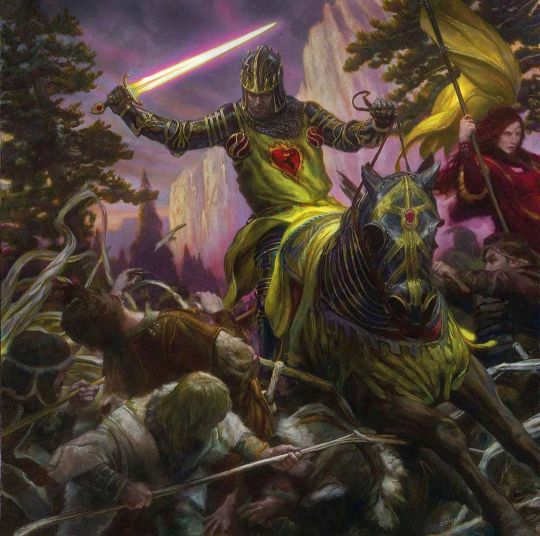
Stannis Baratheon by Donato Giancola, for the A Song of Ice and Fire 2015 Calendar
It's done, Jon thought, they're breaking. The wildlings were running, throwing down their weapons, Hornfoot men and cave dwellers and Thenns in bronze scales, they were running. Mance was gone, someone was waving Harma's head on a pole, Tormund's lines had broken. Only the giants on their mammoths were holding, hairy islands in a red steel sea. The fires were leaping from tent to tent and some of the tall pines were going up as well. And through the smoke another wedge of armored riders came, on barded horses. Floating above them were the largest banners yet, royal standards as big as sheets; a yellow one with long pointed tongues that showed a flaming heart, and another like a sheet of beaten gold, with a black stag prancing and rippling in the wind.
Robert, Jon thought for one mad moment, remembering poor Owen, but when the trumpets blew again and the knights charged, the name they cried was "Stannis! Stannis! STANNIS!"
—A Storm of Swords, Jon X
#asoiaf#asoiaf art#stannis baratheon#melisandre#lightbringer#wildlings#the free folk#the wall#the battle of castle black#the battle beneath the wall#a song of ice and fire#a storm of swords#valyrianscrolls#donato giancola#calendar art#❤️🔥#may the fourth be with you#ty @argelladurrandon for the suggestion for asoiaf lightsaber day 😉 (and happy birthday!)
89 notes
·
View notes
Text
Whumptober 2022 - Day 17 - BBC Ghosts
Title: ThemThere Whumptober 2022 [AO3: Part 1 & Part 2]
Prompt: Breaking Point
Characters: Julian & Robin
Warnings: Spoilers for series 4
————
Day 17 - Breaking Point
Julian knew something was wrong when Robin grew quiet.
Ever since Mary, he’d taken to keeping a close eye on his friend. He understood why Robin did not mourn the way the rest of them did but that did not stop him from worrying because the grief Robin carried – it had to be enormous; unfathomable for someone like Julian who had been alive for only a few decades and dead much the same. His head hurt every time he just so much as tried to imagine the things Robin had seen: cave bears and mammoths and sabre-toothed cats; ice ages coming and going, mountains rising and falling, rivers swelling and running dry. He had seen people go from hunter-gathering Neanderthals to building rockets and landing on the moon. Nothing about the world nowadays was as it had been when he was alive – not the landscape, not the animals and certainly not the people.
The only thing that had never changed was the lights in the sky.
It made Julian’s heart ache when he thought of all the friends Robin must have made in that insane amount of years – and ultimately lost. Mary was just one more heartbreak in a long line of pain Robin couldn’t share with anyone because none of them knew what it was like to watch the world change around them until it became unrecognisable. Not yet, anyway.
“Hey,” Julian said softly. He gestured at the empty spot beside Robin in the little cave-like nook that had somehow become theirs after the night they’d spent in it together, both terrified out of their minds even though they knew, in theory, that nothing could really harm them anymore. “Mind if I join you?”
Robin shrugged but made room for him. Julian sat down, close enough for Robin’s furs to press against his bare leg, and followed his gaze up to the stars.
“You want to be with them, don’t you? Up there,” he asked quietly, pointing at the sky.
Robin’s breaths faltered for a moment.
“I don’t want to be last one left again,” he said at last, his voice breaking at the end. “Is lonely, Julian. You have no idea –“
“I know,” Julian said gently and drew him close. “I can’t possibly understand but – I’m here, Robin. I don’t know for how long but right now, I’m here. You’re not alone.”
There was a moment of heavy silence before Robin turned towards him and wordlessly buried his head in his shoulder. Julian readjusted his hold and held him close until Robin’s shoulders stopped shaking and tears no longer dampened and dried on his shirt. Instead of letting go, he held onto him, allowed Robin to hide for as long as he needed and petted his unruly hair with gentle, reassuring strokes that he hoped managed to soothe at least a fraction of the pain and grief Robin’s old soul usually bore so gracefully.
Above them, Mary’s star twinkled a little brighter, almost as if to say, “You be goods to him.”
I will, Mary, Julian promised and closed his eyes. I will.
#whumptober2022#no.17#breaking point#bbc ghosts#fic#julian fawcett#robin the caveman#robin#bbc ghosts fanfic#bbc ghosts spoilers#my fic
22 notes
·
View notes